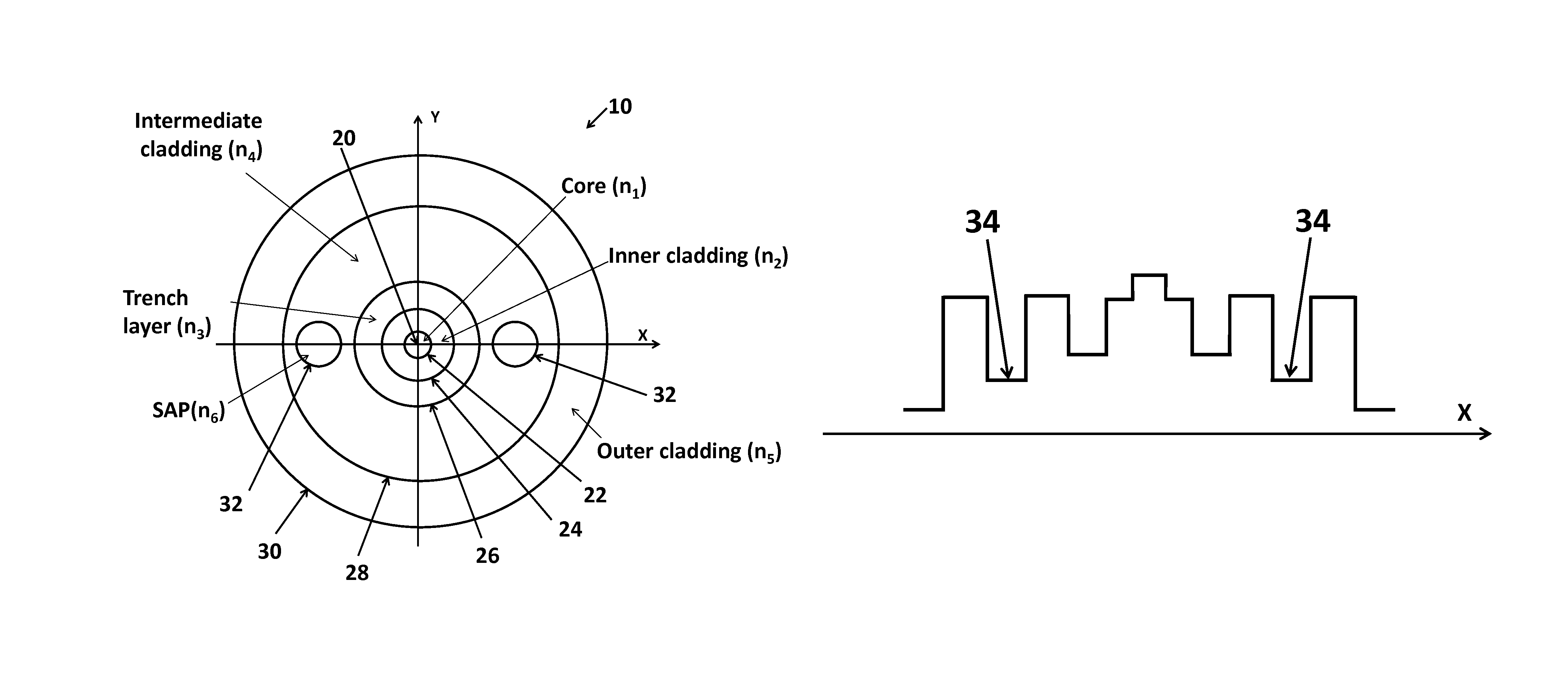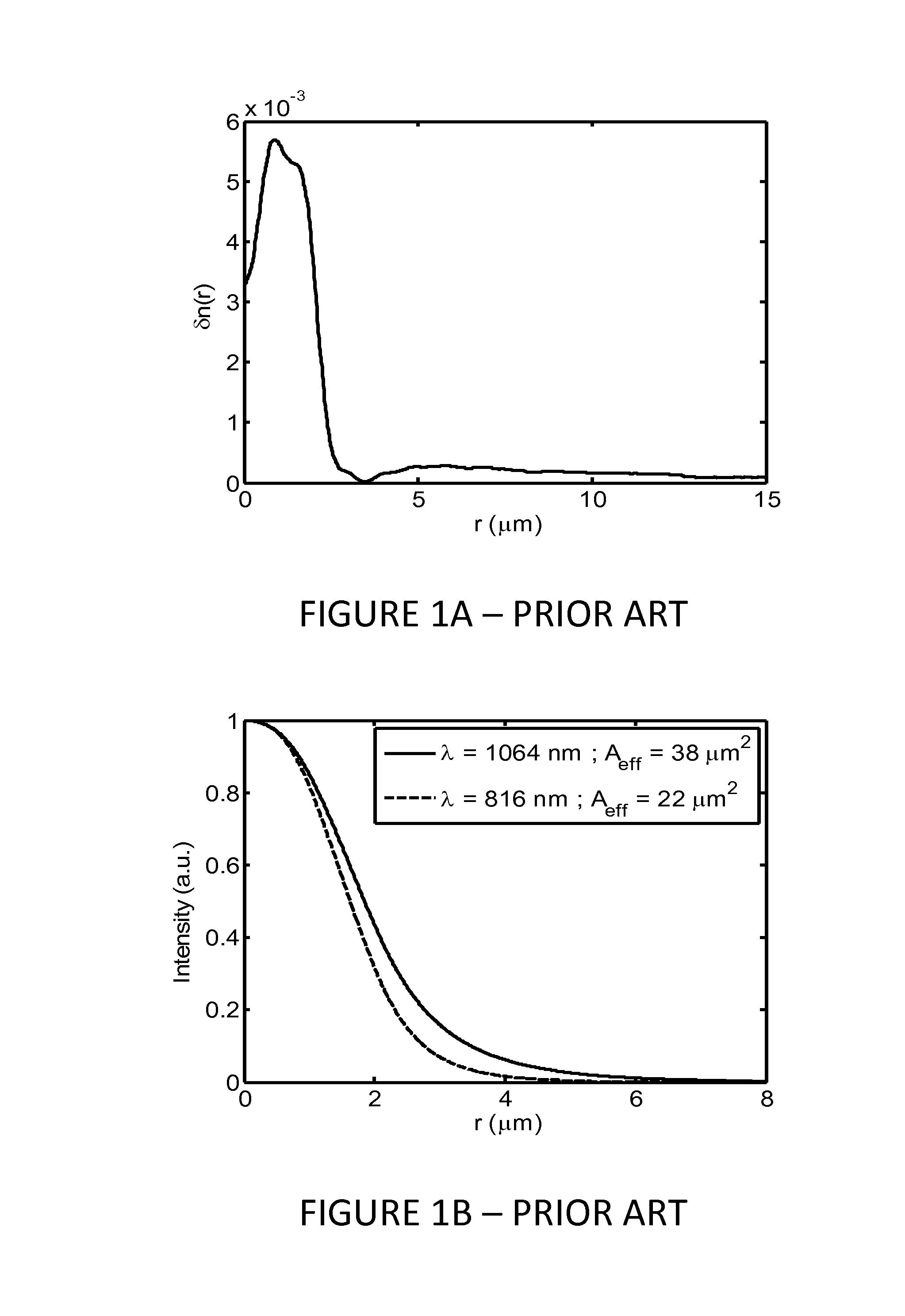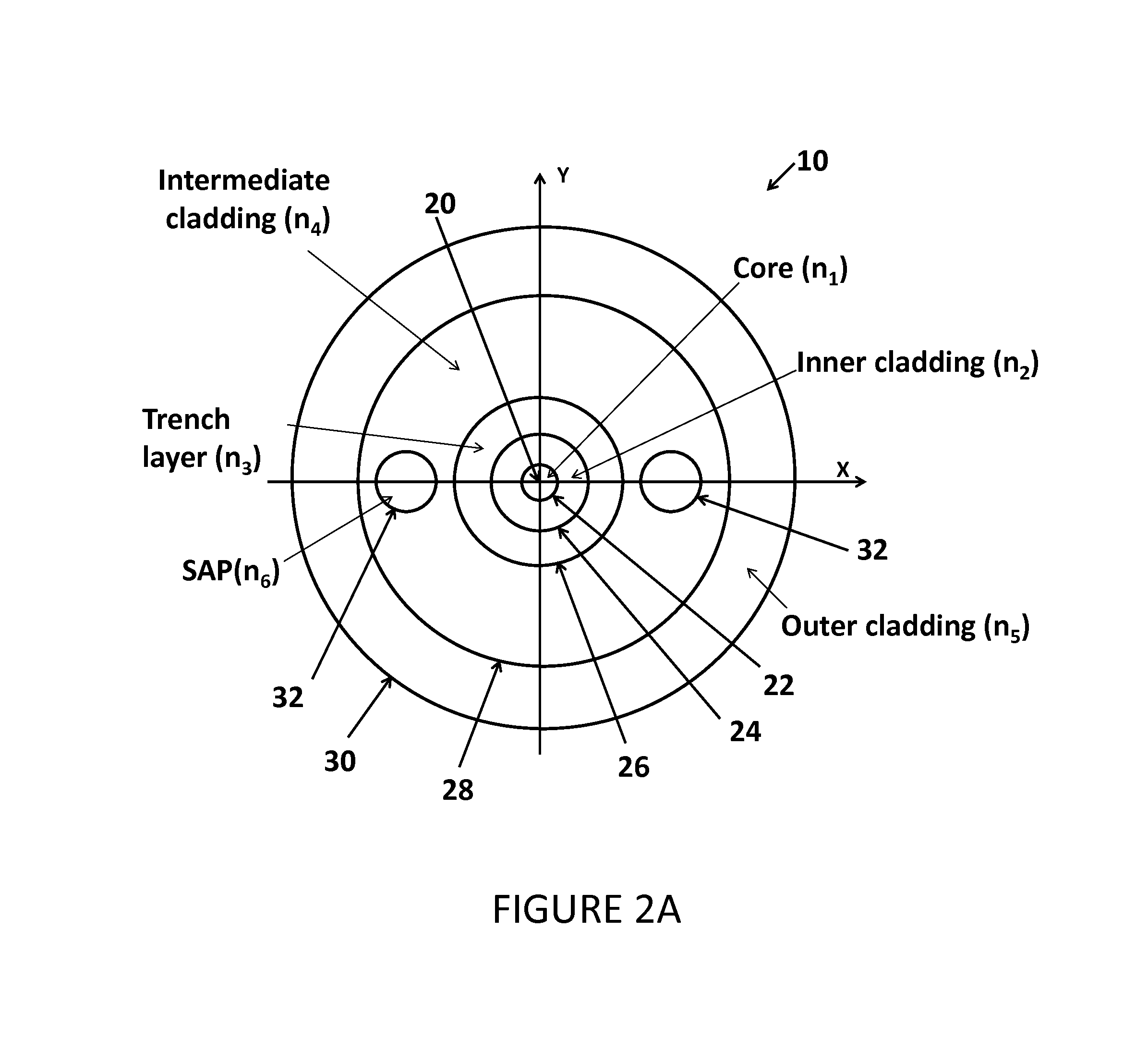Optical fiber for Coherent Anti-Stokes Raman scattering endoscopes
a technology of optical fiber and anti-stokes raman, applied in the field of optical fiber, can solve the problems of contaminating background signals, difficult to interrogate materials and media with conventional means, and known limitation of car endoscopy, and achieve the effect of limiting bending losses
- Summary
- Abstract
- Description
- Claims
- Application Information
AI Technical Summary
Benefits of technology
Problems solved by technology
Method used
Image
Examples
first embodiment
[0038]The schematic illustration of FIG. 2A depicts the structural characteristics of an optical fiber 10 that fulfills the various requirements mentioned earlier and intended for use in a CARS endoscope. Starting from the center position of the illustration, the optical fiber 10 first includes a core 22 that is single-mode for lightwaves at a pump wavelength and at a Stokes wavelength, the core 22 having a radius a1 (not shown in FIG. 2A). The core 22 is made out of an optical material having a refractive index n1 within a spectral region encompassing the wavelengths of interest. The core 22 is substantially centered on the longitudinal axis 20 of the fiber, which extends perpendicularly to the plane of FIG. 2A while being coincident with the intersection of the two orthogonal transverse axes labeled X and Y in FIG. 2A. The core 22 is surrounded by an inner cladding layer 24 having a refractive index n2, this layer being in turn surrounded by a trench cladding layer 26 having an in...
second embodiment
[0053]FIG. 5 illustrates an exemplary refractive-index profile of the optical fiber 10 in which the refractive index n4 of the intermediate cladding layer 28 differs from that of the inner cladding layer n2 by an amount Δ. This adds a degree of freedom in the optimization of the fiber design.
[0054]An optical fiber 10 having a radial refractive-index profile of the type corresponding to the first embodiment has been fabricated. The refractive-index profiles measured along two orthogonal axes X and Y transverse to the longitudinal center axis 20 of the fiber 10 are shown in FIG. 6. As it was the case in the schematic illustration of FIG. 2A, the X axis is parallel to the line that joins both SAPs 32 present in the fiber. Note that the refractive-index changes due to the presence of both SAPs 32 are not visible in FIG. 6A since the SAPs 32 are located beyond the limits of the horizontal axis of the graph.
[0055]Those skilled in the art of optical fiber design will recognize that the rad...
PUM
 Login to View More
Login to View More Abstract
Description
Claims
Application Information
 Login to View More
Login to View More - R&D
- Intellectual Property
- Life Sciences
- Materials
- Tech Scout
- Unparalleled Data Quality
- Higher Quality Content
- 60% Fewer Hallucinations
Browse by: Latest US Patents, China's latest patents, Technical Efficacy Thesaurus, Application Domain, Technology Topic, Popular Technical Reports.
© 2025 PatSnap. All rights reserved.Legal|Privacy policy|Modern Slavery Act Transparency Statement|Sitemap|About US| Contact US: help@patsnap.com



